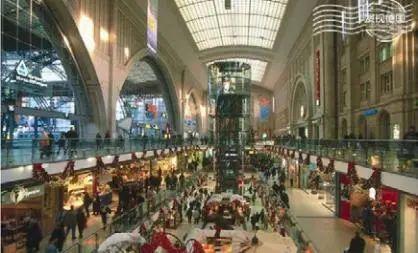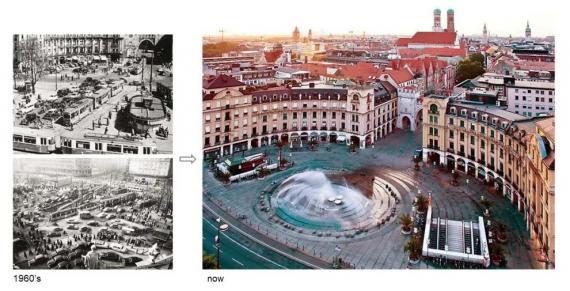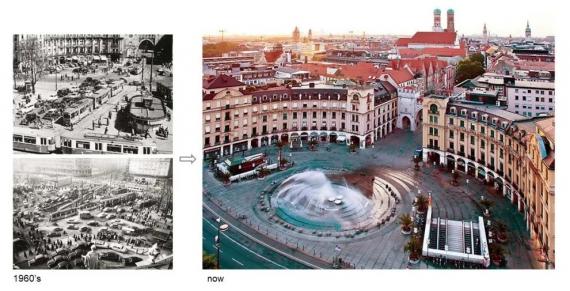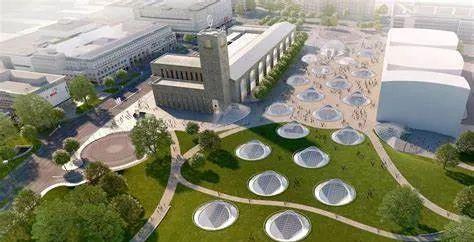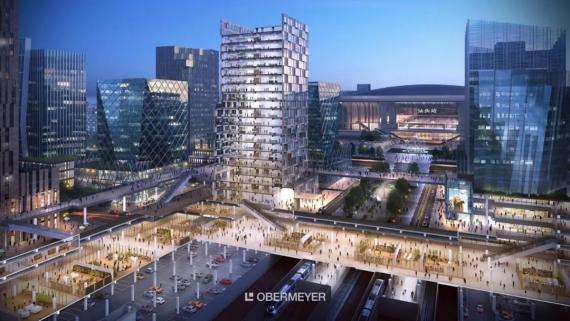OBERMEYER’s presentation about ‘Speed and Real Space Impact of TOD in Evolution’ at the 2023 Annual Meeting of TOD forum
OBERMEYER’s presentation about ‘Speed and Real Space Impact of TOD in Evolution’ at the 2023 Annual Meeting of TOD forum hosted by China Society of Territorial Economists has fascinated most of the audiences. The presentation also pinpointed ideas from the theory of Paul Virilio, a French cultural theorist, urbanist, and aesthetic philosopher, analysing the impact and development of city and urban life by the development of transportation and the stations.
Speed now illuminates reality whereas light once gave objects of the world their shape
——Paul Virilio
The development of science and technology has promoted the speed of transportation, thus enabling the development of cities beyond the historic scale: the diameter of a city has expanded from approx. 5-10km during 16th-19th century to nowadays Mega city.
At the beginning of 19th century, railways came to daily life thanks for the invention of steam locomotive. Late 19th century, autocars have been mass produced, at the same period, the underground/metro system started to thrive. Entering the 20th century, the development of airplanes and high-speed railways were compressing the distance of both space and time.
Since the end of 1990s, the huge economic and social benefits brought by high-speed railway have started a new round of construction climax in Asia (including South Korea, Taiwan and Mainland China). The first maglev line in Shanghai was provided with technical consultation by OBERMEYER.
The city structure from the original relatively loose to more intensive, and with the tram station as the centre, the track as the radial direction, because of railway developments.
Mr. Christopher Knabe, General Manager of OBERMEYER China, takes the Leipzig Station, Karlsplatz, Stuttgart 21 in Germany, as well as Fuyang West Station and Shantou HRS New Town in China as examples to discuss the impact by technology and speed.
01. Leipzig Railway Station
Completed in 1915, Leipzig station was originally a union station shared by two railway operators and the largest of its kind in Germany. As a result, the design of the station is unique, with two identical dome entrance halls belonging to two companies and the station took one of the common place of daily life. Leipzig station was modernized in 1998 and upgraded with a sunken shopping-mall, which covers 30,000㎡ and has 3 floors include 140 shops, making it a central shopping destination. Leipzig is the heart of the region, with about 0.5 million inhabitants, and the station’s shopping center is conveniently located on the central promenade of the city.
02. Karlsplatz/Munich
Karlsplatz (usually called Stachus by Munich locals) is a large square of Munich with historical and cultural value. The most important buildings are the Karl Gate (the city gate of a medieval castle) and the New Baroque Palace of Justice. After the World War II, Germany's economy recovered rapidly, the number of cars owned increased year by year, and the traffic congestion in Karl Square was also very serious, as shown in the left figure. With the convening of the 1972 Munich Olympic Games, OBERMEYER was responsible for the comprehensive transformation of the Karl Square. By arranging all the traffic functions and commercial facilities underground, the ground space was handed over to pedestrians. Thus the environmental quality of Karl Square has been greatly enhanced for the overall benefit of citizens.
03.Stuttgart 21
Stuttgart 21 is a comprehensive project in Stuttgart/Germany, focusing on transforming the historic station from a pure terminal into an underground-transit train station. On the railway side it transforms the 16 aboveground platforms with 4 underground platforms that are operating crosswise to the old station. Over 60km of new tracks were paved and 16 tunnels and 18 new bridges built for allowing the new high-speed rail-link between Stuttgart and Ulm. The park-roof of the new underground station is supported by 28 spectacular Holy Grail like columns. They are covered with glass, allowing light to pass through.
04. Fuyang West Station
The design inspiration of the station building of Fuyang West Railway Station is derived from the characteristics of Fuyang's rich historic landscape. The railway station is integrated into this very landscape through the air platform. That way it connects to surrounding mountains, weakening the separation of the rail track from the natural environment, and blending the new structure into the large ecological pattern. The urban landscape platform connects on the second floor into the railway station, greatly increasing the regional accessibility and quality of life.
05. Shantou HSR New Town
In Shantou the rail tracks split the city. OBERMEYER intelligently applies multi-dimensional spaces between the ground / above-ground / to sew up the city and connect the east and west areas of the station to the river bank in the east. The Station Boulevard, referring to the famous Boulevard ‘Unter den Linden’ in Berlin, improves the urban environment by connecting Shantou station in a pedestrian friendly way. An elevated platform is placed to the South of the boulevard, which links Shantou Station Square, bus terminal and other important nodes. The buildings between boulevard and elevated platform have entrances on different heights, increasing the neighbourhood-connectivity significantly.



